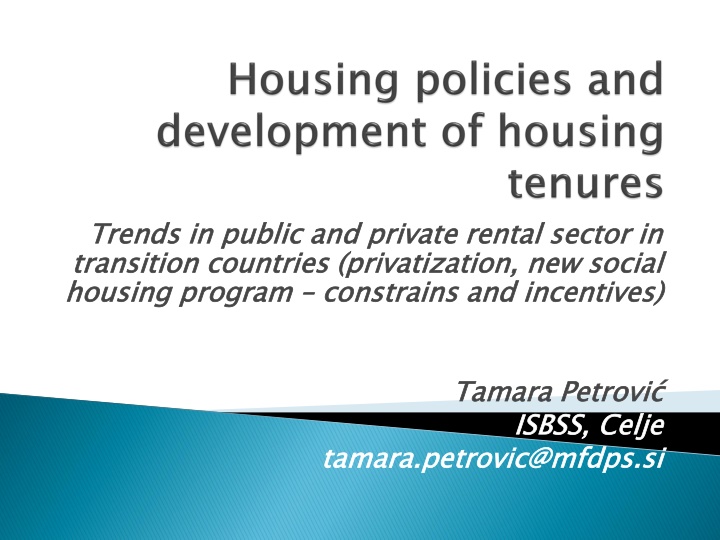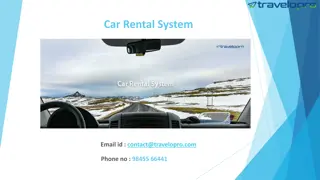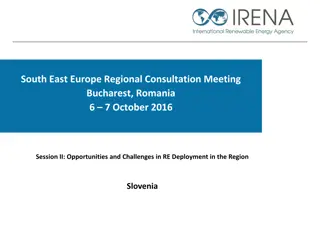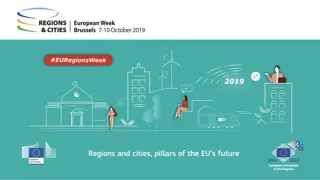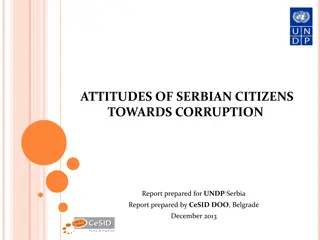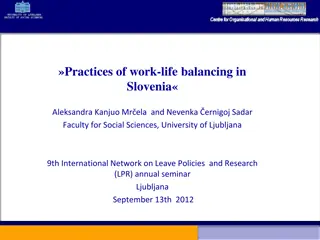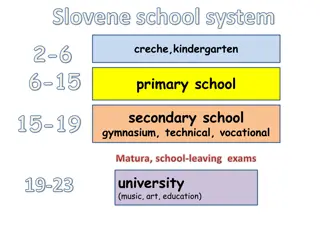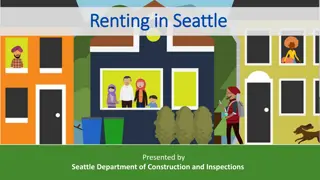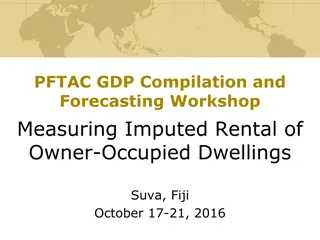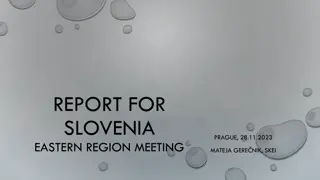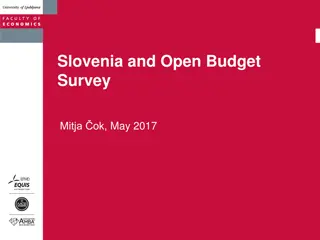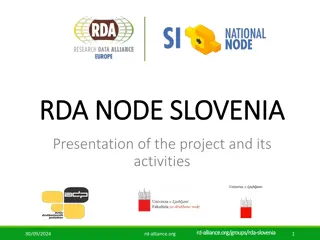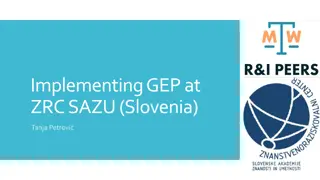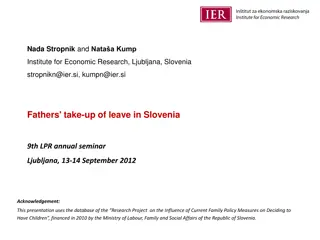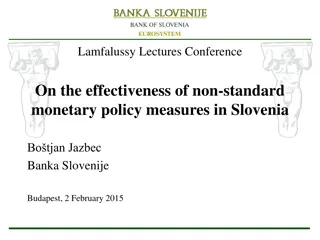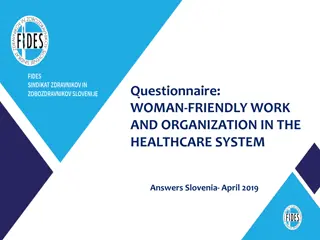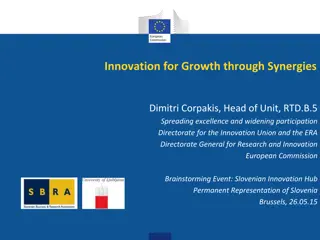Rental Sector Trends and Policy Evolution in Slovenia and Serbia
Explore the evolution of the rental sector in Slovenia and Serbia, from the socialist order to privatization and the current challenges faced in providing social housing. Key events, documents, and legislative acts have shaped the rental landscape in these transition countries, impacting ownership rates, social housing programs, and the construction of non-profit units. The analysis delves into the constraints and incentives influencing the public and private rental sectors in these nations.
Uploaded on Sep 30, 2024 | 1 Views
Download Presentation

Please find below an Image/Link to download the presentation.
The content on the website is provided AS IS for your information and personal use only. It may not be sold, licensed, or shared on other websites without obtaining consent from the author.If you encounter any issues during the download, it is possible that the publisher has removed the file from their server.
You are allowed to download the files provided on this website for personal or commercial use, subject to the condition that they are used lawfully. All files are the property of their respective owners.
The content on the website is provided AS IS for your information and personal use only. It may not be sold, licensed, or shared on other websites without obtaining consent from the author.
E N D
Presentation Transcript
Trends in public and private rental sector in transition countries (privatization, new social housing program Trends in public and private rental sector in transition countries (privatization, new social housing program constrains and incentives) constrains and incentives) Tamara Petrovi ISBSS Tamara Petrovi ISBSS, Celje , Celje tamara.petrovic@mfdps.si tamara.petrovic@mfdps.si
Identify key events and documents, which assisted in tailoring the rental sector as it is present today in Slovenia and Serbia Analyze the situation with the social rental sector Presentation Supportive Environment Programme of the Social Housing in
Socialist order in the SFRY - provision of housing for majority of citizens by the state itself Pursuant Constitution, citizens could obtain housing right on a dwelling from the public housing stock Need allocation of housing rights and possibilities for affordable housing loans for housing construction or purchases Dissolution of the SFRY Article 78 of the 1991 RS Constitution: The state shall create opportunities for citizens to obtain proper housing. Serbian Constitution has no provision on housing policy. to Article 164 of the 1974 SFRY for rental sector was concealed with the
1991 Housing Act (HA) Privatization and ownership rate NHP 2000-2009 Need for social housing 2003 Housing Act (HA-1) 4 rental types (market rentals, non-profit rentals, employment based and purpose rentals) Rules on renting non-profit apartments National subsidies Housing Saving Scheme Act -
The actual construction of non-profit units has been cca 450 units annually, instead of 2,500. At municipalities owned 21,260 dwellings. In 2009, the number was merely 15,728 (restitution, sale). Around 8,300 non-profit units needed. Draft of the new NHP: inadequate occupation of the housing stock and under-development of the rental (especially inefficiency of the housing stock, low residential mobility of citizens, etc. the beginning of the year 2000, the sector, low affordability young of dwellings energetic for people),
New categorization of rentals - instead of the non-profit, employment-based and purpose dwellings the public rental housing. Other two categories - private rentals and mixed rentals. New benefit system the housing allowance (assisting families with the housing costs, promoting rental sector and lawful renting).
New regulation of the rental sector (from both legal and political point of view). Greater municipalities with the most prominent need and the lowest financial capabilities. Conclusion: There is a place for new social rental agencies within the Slovenian housing system (both current and prospective). financial support for the
1992 Housing Act Privatization and home-ownership rate Influx of refugees and IDP s, embargos, NATO aggression and Kosovo crisis, change in the regime, economic crisis, etc.
Core within the period 1992 and 1994 Similar to other countries Modest profit Result: housing stock Article 44 of the HA - 1.3% from the gross salaries for the construction of solidarity apartments activities of privatization performed 98% of home-owners, 2% public
Beginning through the middle of the nineties - refugees from the territories of former Yugoslav republic Herzegovina). Another wave of internally displaced persons (IDPs) during and after 1999 from the territory of Kosovo and Metohija. Today around 70,550 registered refugees from the conflicts in 90 and 210,000 IDPs from Kosovo. A large proportion still in need of durable housing solution As many as 2,540 people (around 500 refugees and 2,000 IDPs) still in 24 collective centres (especially Croatia and Bosnia and
National Strategy for Settling the Issues of Refugees and IDPs from 2002 Settlement Programme CARDS programme UNHCR's Environment model Joint Regional Program on Durable Solutions for Refugees and IDPs - governments of Serbia, Croatia, Bosnia and Herzegovina and Montenegro in 2011 and Integration of Refugees Social Housing in Supportive
Initiation: Swiss Agency for Development and Cooperation in 2003 Integration of housing solution and social assistance Intended mostly for the refugee, IDPs and local socially endangered households Construction households; common area One of the households is a younger socially endangered family, whose role is to assist the other less capable households with their everyday chores Organization, provision - the responsibility of the municipalities Centres for social works are in charge of the allocation of the units to the users and the providing psychological help. of a multi-unit building for several technical and financial support, their
Users are not able to buy out their unit. Right to use usually allocated for the period of the most severe social hardship. No rent, only the running costs There are approximately 931 such buildings in 42 municipalities across Serbia. Around 2,800 individuals
Social Housing Act (2009) increase the number of rental units and assist the most vulnerable groups of citizens with housing issues Article without a(n) (appropriate) dwelling and whose incomes prevent them from obtaining a dwelling under market conditions National Housing Agency established in 2012; enacted National Social Housing Strategy (2012) Non-profit housing organizations on municipal level 10: Eligible are individuals, who are
Social housing is intended for either renting or selling purposes. Units for renting are not to be sold or subleased. Up to now, mostly for selling Programme for Construction of Dwellings for Social Housing - only for renting The dwellings are to be constructed in the following municipalities: Ni , Kraljevo, a ak, Kragujevac, Kikinda, Zrenjanin and Pan evo. A part of the funding from the means of the NHA, while the other part by the municipalities
The situation is improving, although there are a number of issues to be addressed in the future renting, rental sector in general, finances, etc.). Support the successful programmes Social actions in this direction, BUT Financial constrains (legislation especially regarding rental agencies - already certain
